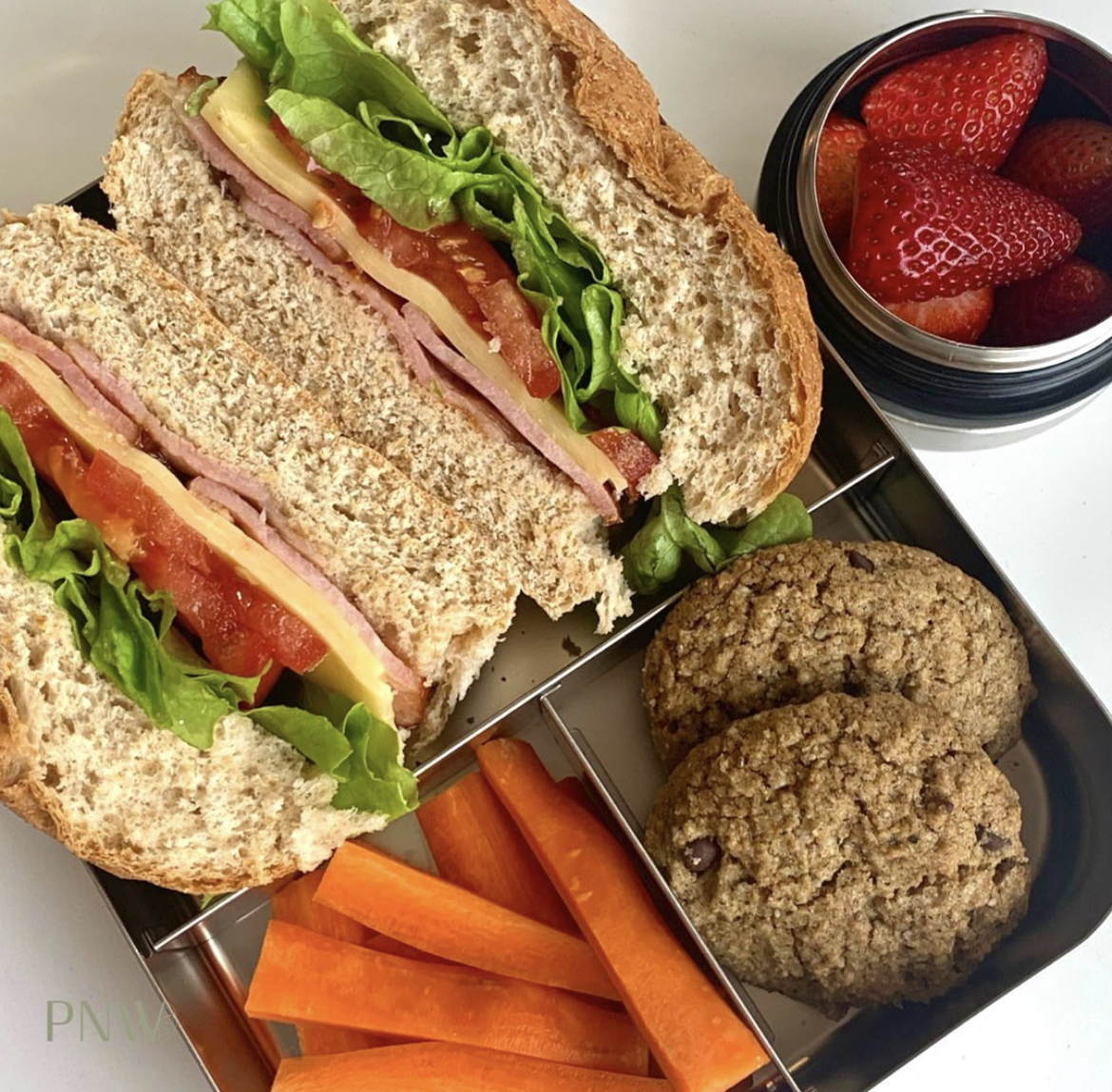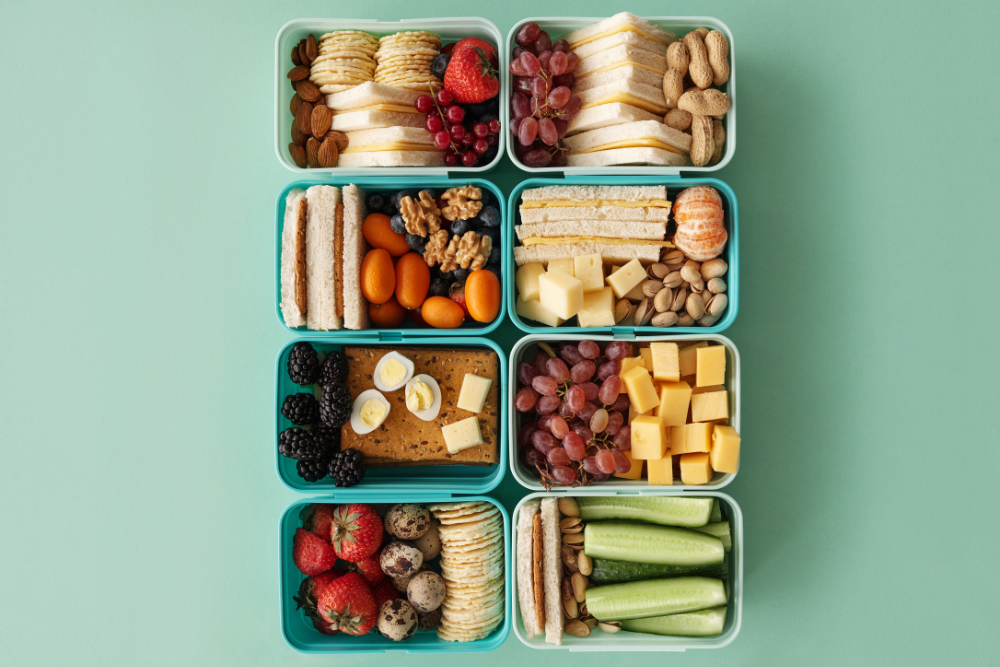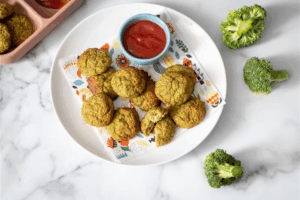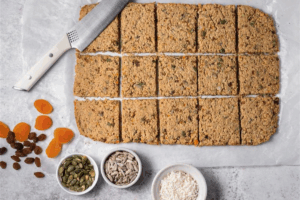The start of the school year brings many exciting new experiences, but for parents the novelty of packing lunch boxes can quickly wear off! Add two or three kids into the mix, each with their own likes and dislikes to cater for, and it’s no wonder this feels like yet another task on a busy parent’s ‘to do’ list.
However, rather than being a chore, try to view packing lunch as a great opportunity to fuel your child’s mind and body during their school day. After all, children consume around a third of their food intake during school hours, and research shows improved nutrition can enhance cognition, concentration, and energy levels.

Use the following checklist and make it easy to build a nourishing lunch box:
- Fruits and vegetables – aim for at least one of each. Our bodies and in particular our gut microbes love variety, so incorporate different colours and enjoy seasonal produce for peak freshness and taste.
- Complex carbohydrates – includes vegetables, wholegrains and legumes. Carbohydrates fuel active little bodies and brains but the complex ones contain more fibre and starch so they’re filling, slower to digest and provide long-lasting energy without spiking blood sugar. With bread products, choose wholegrain or wholemeal to maximise fibre and a range of nutrients.
- Protein – important for growing bodies, but it can’t be stored so include some in each meal. Swap processed meats for home-cooked meats (leftover roast), eggs (including frittata or vegetable slice), legumes (chickpeas, baked beans, tofu) and seeds.
- Calcium rich food – essential for building strong bones and teeth during childhood. Dairy is the easiest way to get adequate calcium and it also doubles as a source of protein, but fortified milks and tofu, fish with bones, legumes, seeds and leafy greens are also sources if your child doesn’t eat dairy.
- If you have kids like mine and a baked good is also considered a lunchbox ‘essential’, boost the nutrition in favourite recipes by adding seeds, vegetable and wholegrains and reducing the sugar as much as possible. While supermarket-bought convenience foods are part of our busy lives these days, they are often energy dense and nutrient poor. If you do add these foods to lunchboxes try to choose ones with limited added sugars, colours or flavours, as these can impact learning, behaviour and concentration.
- Don’t forget the water bottle!
If that seems like a lot to think about on a crazy school morning, make it easy by spending an hour on the weekend baking a batch of something, filling reusable pouches with yoghurt and chopping up some fruit and vegetables. Leftovers are also a great option and can be served hot or cold. Then all you need to do is grab a few things from the fridge and freezer and lunch has practically packed itself!

Set your kids up for success
There are so many exciting things to do when starting school for the first time that eating is probably way down the list of priorities for your child! You can make it easy and help set them up for school lunch success in the following ways:
Understand the school environment
- When and how long are the food breaks? Pack foods your child can manage to eat during this time and avoid food that requires assembly or is too hot if packed in a thermos. Cutting food into bite-size pieces can also be helpful.
- Most children would rather play with their friends than eat, so if there is no formal eating time or it’s not long enough for your child, try to give them food they can take when they head out to play. It’s not ideal, but it’s reality!
Have the right tools for the job
- It may seem crazy, but the right lunchbox can be the difference between your child eating their lunch or not. You may love the idea of a bento but if your child spends all their time trying to figure out what to eat first, you might be better off with a dedicated container for each food break. Use containers you already have until you can see what works best for your child.
- Practice opening (and closing!) lunchboxes and cooler bags at home so they can do it themselves at school. If your child has to wait for a teacher to help they’ll miss out on valuable eating time.
Keep it simple
- Offer foods your child is familiar with – don’t serve sushi for the first time just because it looks cute in that brand new lunchbox! If they only like a sandwich at lunch then serve that, even if you have to cut it into smaller pieces to fit.
- Offer limited choices – strawberries or grapes, carrots or tomatoes? Keep it simple in those early days and don’t overwhelm your child, or yourself for that matter!
- Knowing what’s in their lunchbox can be very reassuring amidst all the uncertainty of those early days of school so try to pack it together if you can.
- If food is coming home uneaten casually ask why, but don’t make a big deal out of it. There’s often a perfectly logical explanation. Speak to the teacher if it continues and concerns you.
Amanda is a clinical nutritionist and mum to three teenagers. She helps busy parents take the stress out of feeding their family by providing practical and personalised advice about food and nutrition. Her approach is realistic and evidence based. Amanda is available for nutrition consultations, individual and small group cooking classes, supermarket tours, pantry makeovers and nutrition education sessions.
For school lunch ideas and practical nutrition tips for busy families:






